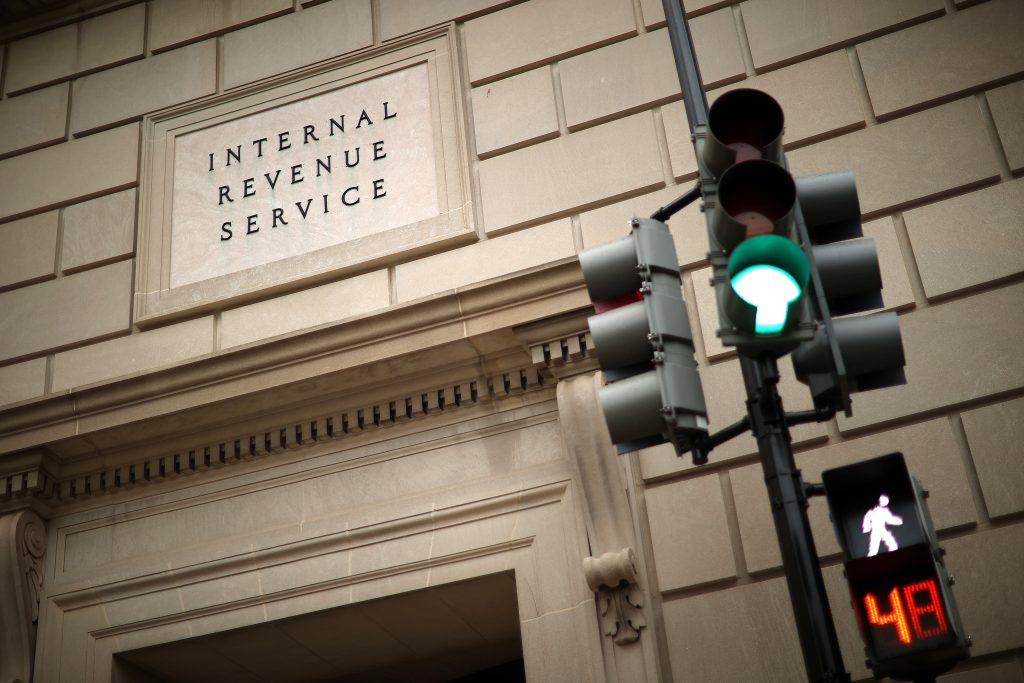There’s a surprising culprit behind the sooner-than-anticipated debt-limit deadline: Better IRS service.
It’s not just weaker-than-expected tax receipts that are pushing up the drop-dead deadline for raising the legal cap on borrowing. It’s also that the IRS is processing people’s tax returns faster. Because of its newfound efficiency, the government will run out of money to service its debts earlier than it expected.
This time last year, the agency was sitting on a pile of more than five million tax returns awaiting attention. The backlog this year is less than half of that, thanks in part to the $80 billion Democrats pushed through for the IRS.
That means there isn’t a huge lump of tax payments still waiting to be collected, like there was last year, when many didn’t get deposited until May or later. Most of the tax payments Treasury is going to receive have now already been collected, the Congressional Budget Office says.
“As a result, we anticipate that the IRS will process relatively few additional payments in May,” the nonpartisan agency says.
“That, in combination with the less-than-expected receipts through April, means that the Treasury’s extraordinary measures will be exhausted sooner than we previously projected.”
CBO and Treasury said Monday that they expect lawmakers to have to act by early June. In a letter to lawmakers, Treasury Secretary Janet Yellen said the deadline could come as soon as June 1, though she said it’s also possible the deadline will end up being “a number of weeks later than these estimates.”
That has caught lawmakers off guard, with many expecting the deadline to land in late July.
President Joe Biden is slated to meet with congressional leaders next week. House Republicans have passed an increase tied to a host of budget cuts, something that is a nonstarter for Democrats. Lawmakers will likely have to pass a short-term extension to buy themselves more time to negotiate.
The deadline for action turns heavily on tax revenues, which are volatile. And a big reason for the new “X-date” is capital gains receipts, which have plummeted in the wake of last year’s downdraft on Wall Street.
But the timing of how quickly the IRS can turn around people’s returns matters too, and this was the first tax season since Democrats pushed through a one-time cash infusion for the agency that was six times its annual budget. As part of an overhaul of the agency, the administration is emphasizing improved customer service, in part by hiring thousands of new workers.
People who expect to receive tax refunds tend to file early because they want their money. There’s usually a lull in the middle of tax season before a rush at the very end that’s comprised disproportionately of people who owe (some tax veterans refer to the filing season as having “Batman ears”).
It’s not uncommon for wealthy people who owe to not only file very late in the tax season but also do it on paper, rather than electronically, because that takes the IRS longer to process, which means the taxpayers’ money can sit in an account longer collecting interest.
This time last year, when the agency was facing a queue of 5.2 million returns, the tax payments that came with them often wouldn’t get deposited in federal coffers for some time after Tax Day.
This year, through April 21, the IRS says it has processed 98.1 percent of the 134,649,000 returns it has received. That leaves 2.45 million awaiting action.
The total number of returns the IRS has received so far this year is down by 1.3 percent or about 1.8 million filings compared to last year.
That could partly be because the department gave people in California and other states hit by natural disasters until October to file. It’s unknown how many are taking advantage of that extension.
But there are lots of wealthy people in California, in particular, and there is a financial incentive for those who owe to delay paying as long as possible — which could be another reason why the debt deadline is coming faster than lawmakers anticipated.





